Life in 19th-century America was both rugged and resourceful. From bustling port cities to remote frontier cabins, mealtime reflected a blend of regional traditions and homegrown ingenuity. American dinners were hearty, and shaped by available ingredients.
These meals reflected the diversity and creativity of the people, making the most of what was available in their surroundings.
Here’s what people really ate at the time, offering a glimpse into the daily life and culinary traditions of 19th-century America.
1. Cornbread & Salt Pork
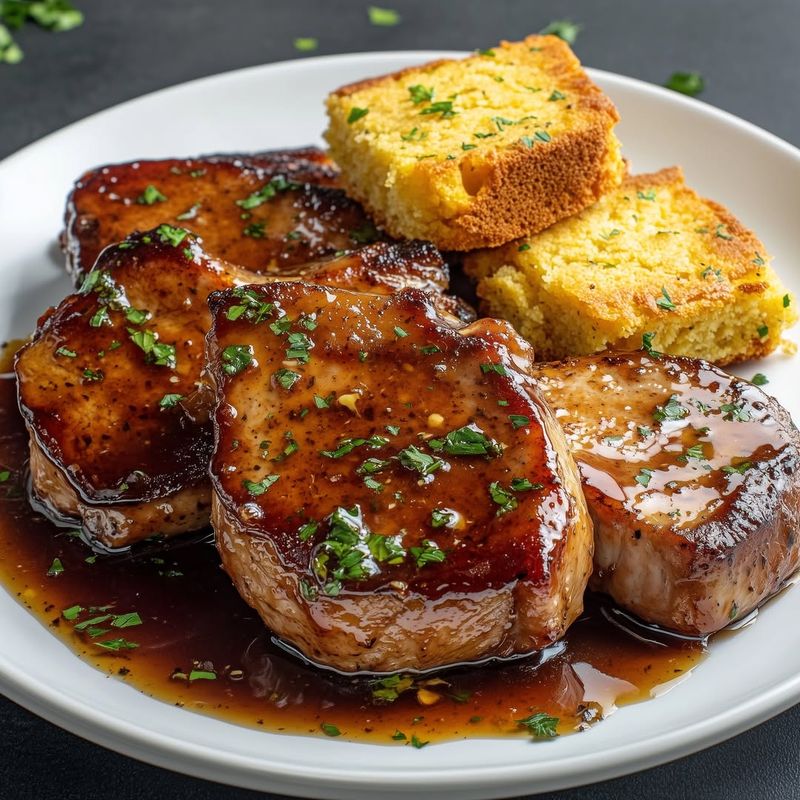
A simple mixture of cornmeal and salted pork provided a robust, filling dinner for rural folk. The golden bread emerged from stone-ground meal, while salty cuts of pork added a flavorful protein boost.
It was no gourmet affair, but cornbread and salt pork exemplified practical cooking, where every crumb and scrap mattered. Many found deep comfort in this no-frills staple that spoke of home.
2. Johnnycakes & Molasses

A hot griddle sizzled with thin cornmeal cakes sweetened by a drizzle of thick molasses. The slight crunch and rustic corn flavor made these little rounds a morning or evening pick-me-up.
Johnnycakes and molasses came to define many frontier breakfasts, reflecting the era’s reliance on corn as a major crop. The marriage of sweet syrup and earthy meal satisfied cravings with minimal ingredients.
3. Chicken & Dumplings

Plump poultry and pillowy dumplings floated in a rich, savory broth that made farm life seem less arduous. Families would gather around steaming pots, dishing out spoonfuls of tender chicken and doughy dumplings.
In many households, chicken and dumplings became a symbol of warmth and affection. It was the kind of dinner that brought relief after a long day’s labor.
4. Beef Stew With Root Vegetables
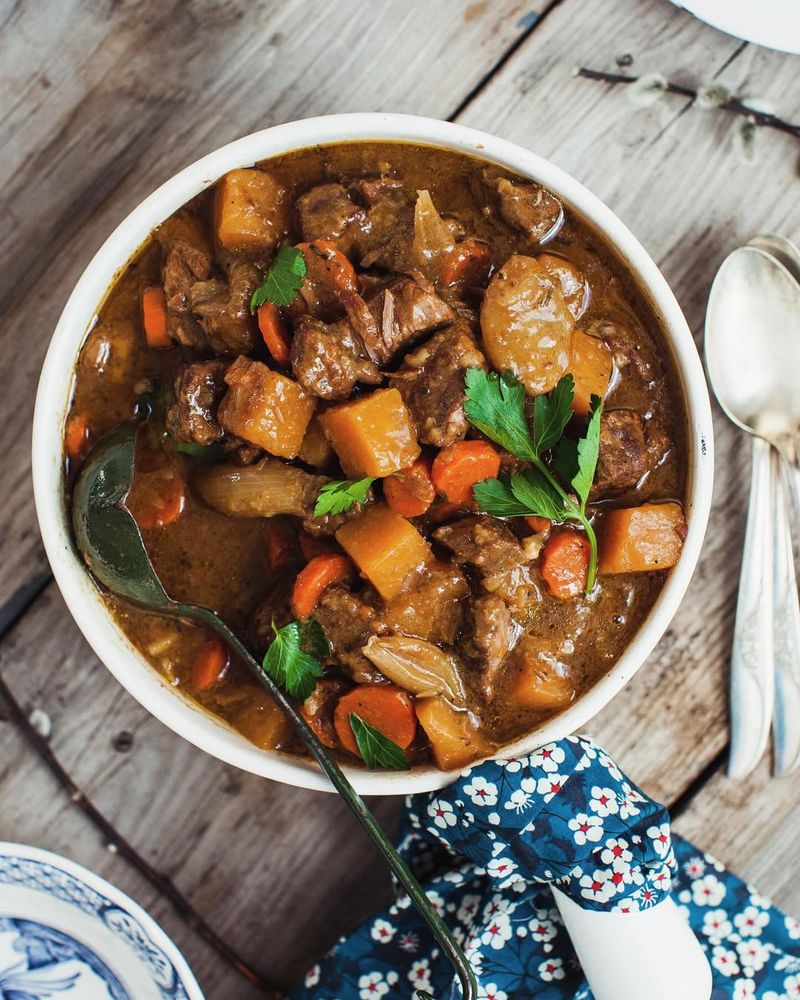
A pot simmering over an open fire often contained beef stew laden with root vegetables. Earthy carrots, firm potatoes, and sweet onions mingled with slow-cooked beef.
In an era where groceries were scarce, each spoonful of this stew captured the region’s seasonal produce. It was humble food that spoke volumes about survival and community.
5. Pork & Beans
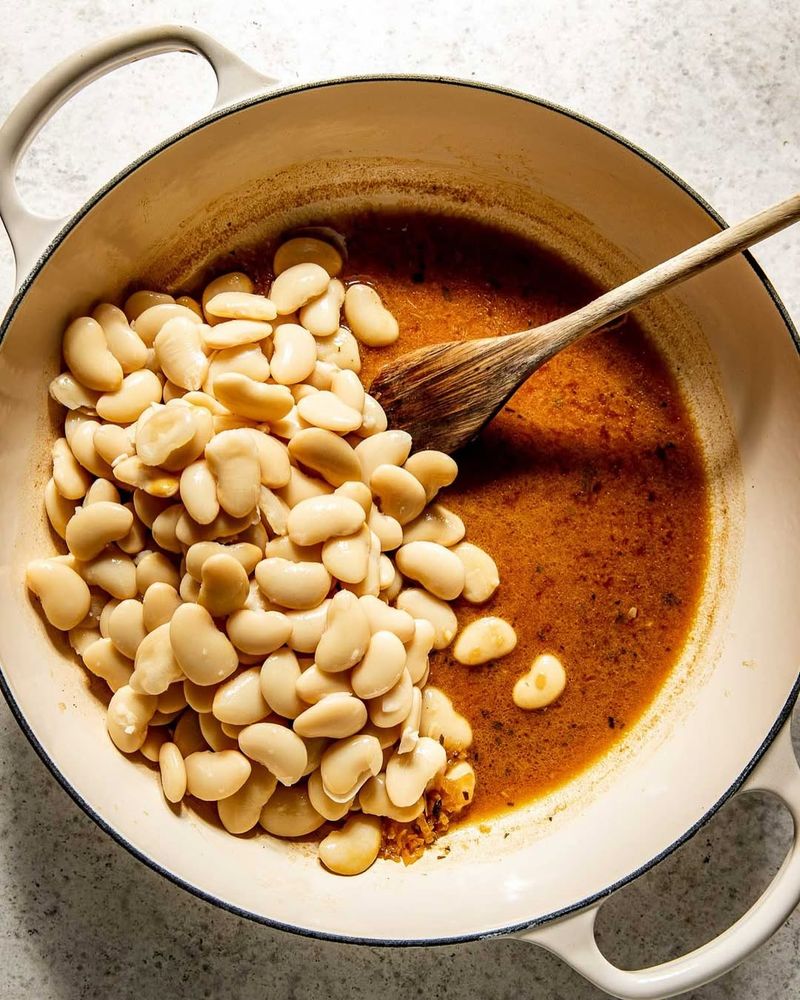
Many Americans found pork and beans to be both cheap and protein-rich, often sweetened with a drizzle of molasses or brown sugar. The beans, cooked long and slow, turned soft and comforting.
This dish was a reliable dinner for farmers and townsfolk alike. It warmed bellies in every corner of the nation, solidifying its place in culinary history.
6. Buffalo Steak & Hominy
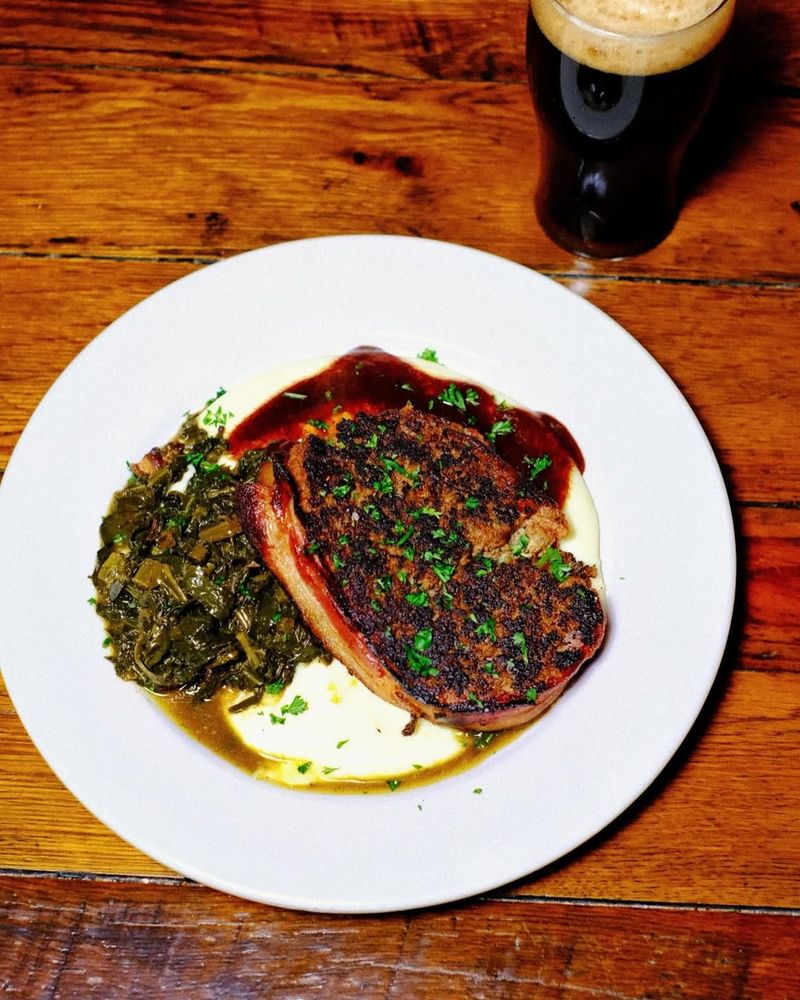
On the Western plains, buffalo steak accompanied by hominy carried both a sense of adventure and gratitude. The buffalo meat exuded a rich, gamey flavor, while the processed corn provided a hearty base.
Pioneers and settlers leaned on such dishes to sustain their journeys. It was a testament to indigenous practices melding with new frontier lifestyles.
7. Rabbit Stew
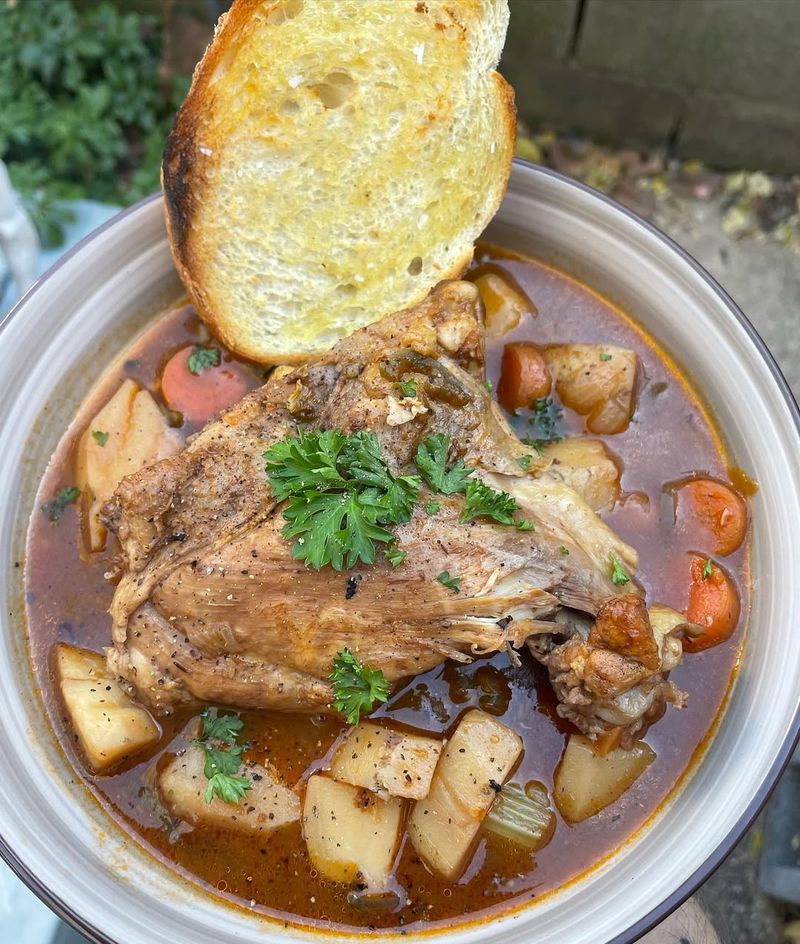
A cast-iron pot brimming with rabbit stew signified a lucky day’s hunt. Tender rabbit meat, potatoes, and onions melded into a meal that soothed weary limbs.
In remote areas, game like rabbit made a difference between a satisfying dinner and going hungry. The stew’s unpretentious harmony reminded families of the land’s bounty.
8. Hardtack & Salted Meat
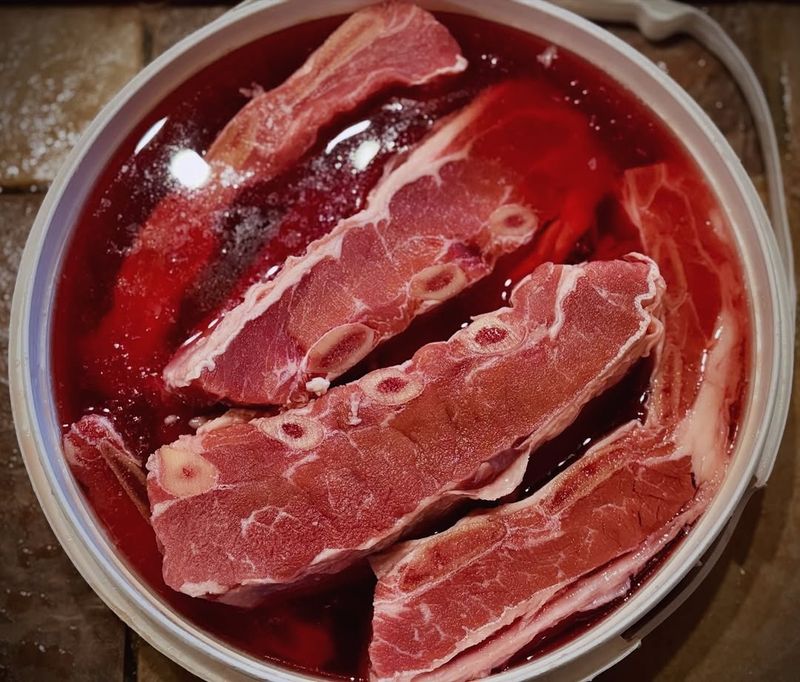
Hardtack and salted meat, though far from gourmet, was the pragmatic food of pioneers and soldiers. The hard, cracker-like biscuit could endure weeks, and salted meat fought off spoilage.
Despite its blandness, it fueled countless journeys across plains and battlefields. For those who ate it, survival trumped taste, proving necessity is the mother of invention.
9. Fried Catfish & Grits
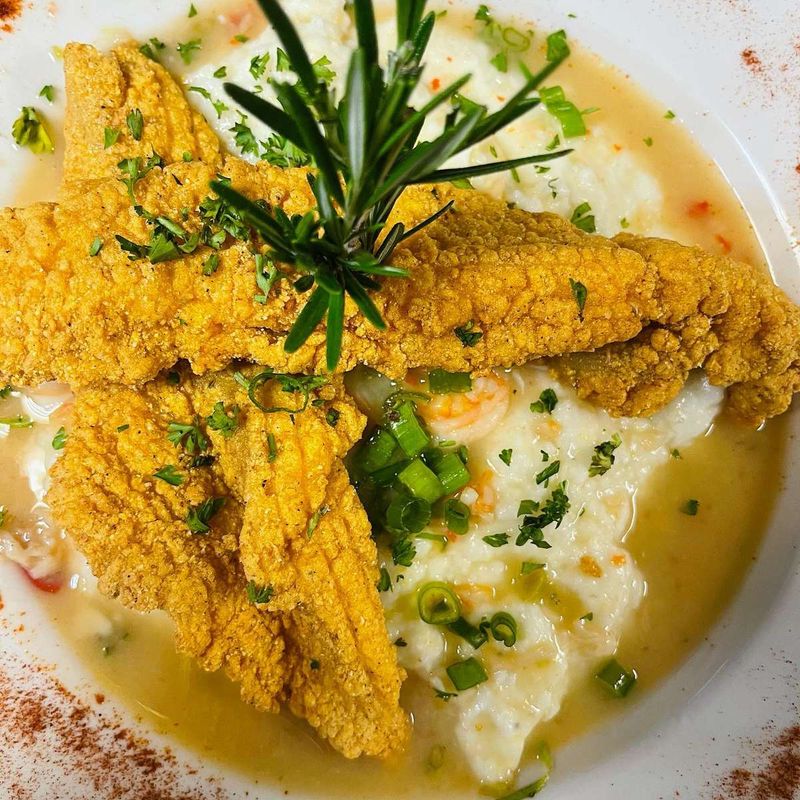
Rivers and lakes supplied catfish that found a crispy end in sizzling oil. Served with grits—a coarsely ground corn porridge—it offered a Southern staple that balanced flavor and sustenance.
Fried catfish and grits showcased the region’s freshwater riches. Fishermen, farmers, and city-dwellers alike embraced this comfort meal that required minimal fuss.
10. Biscuits & Sausage Gravy
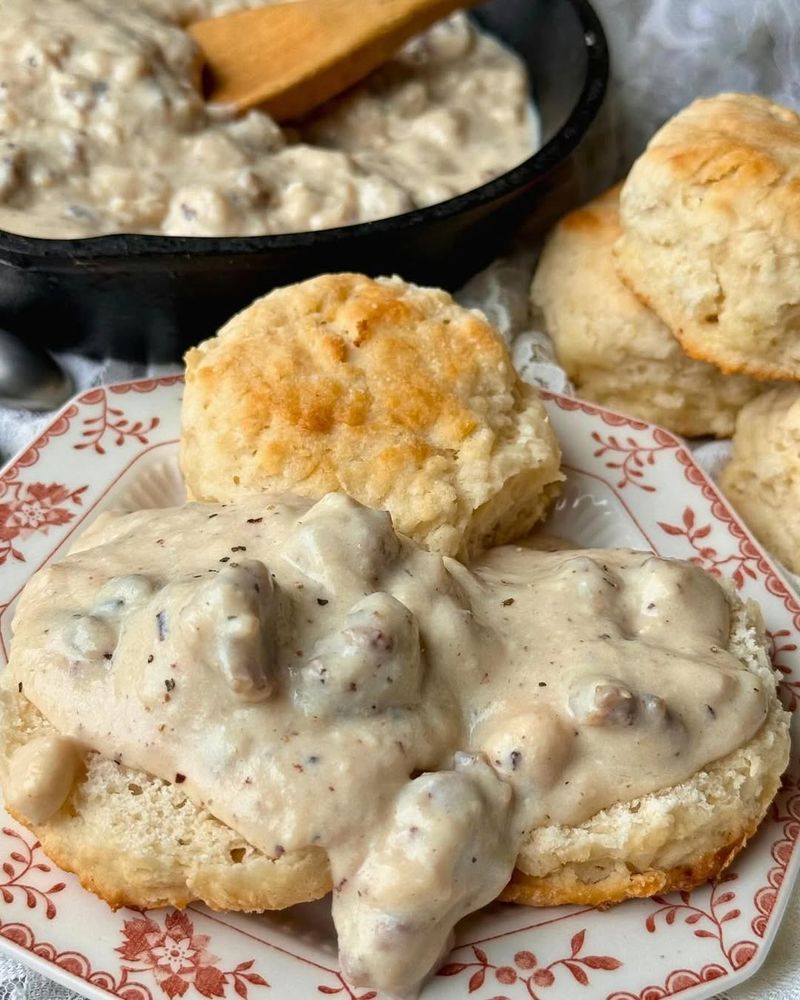
Warm biscuits blanketed in sausage gravy made for a hearty start or finish to the day. The tender biscuit absorbed the peppery, creamy gravy, leaving no morsel untouched.
In many Southern homes, biscuits and sausage gravy blurred the line between breakfast and dinner. Its filling nature spoke to an era when every meal had to power a full day’s work.
11. Hoppin’ John
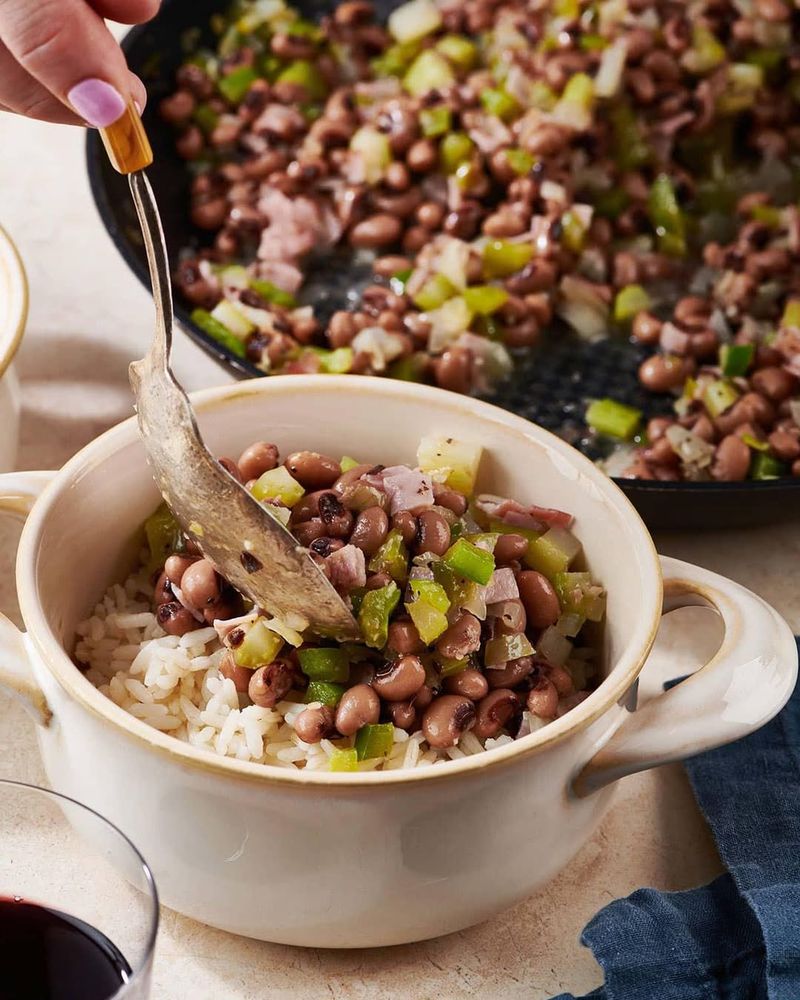
A pot of black-eyed peas, white rice, and a sprinkle of salt pork formed the basis of hoppin’ john. This dish tied tradition to the promise of good fortune, especially on New Year’s Day.
It was affordable, flavorful, and steeped in West African roots. Families believed each bite heralded prosperity in times of uncertainty.
12. Collard Greens with Ham Hocks
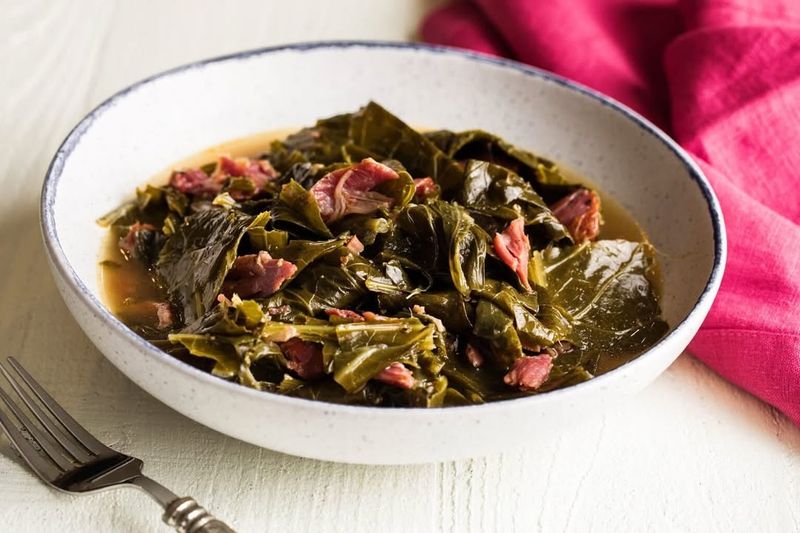
Collard greens simmered with smoky ham hocks for hours, softening their fibrous leaves into a savory, nutrient-rich dish. The greens soaked up the ham’s essence, delivering a satisfying depth.
Across the rural South, this slow-cooked staple kept families nourished. It stood as proof that low-cost ingredients could yield remarkable taste.
13. Fried Chicken & Buttermilk Biscuits
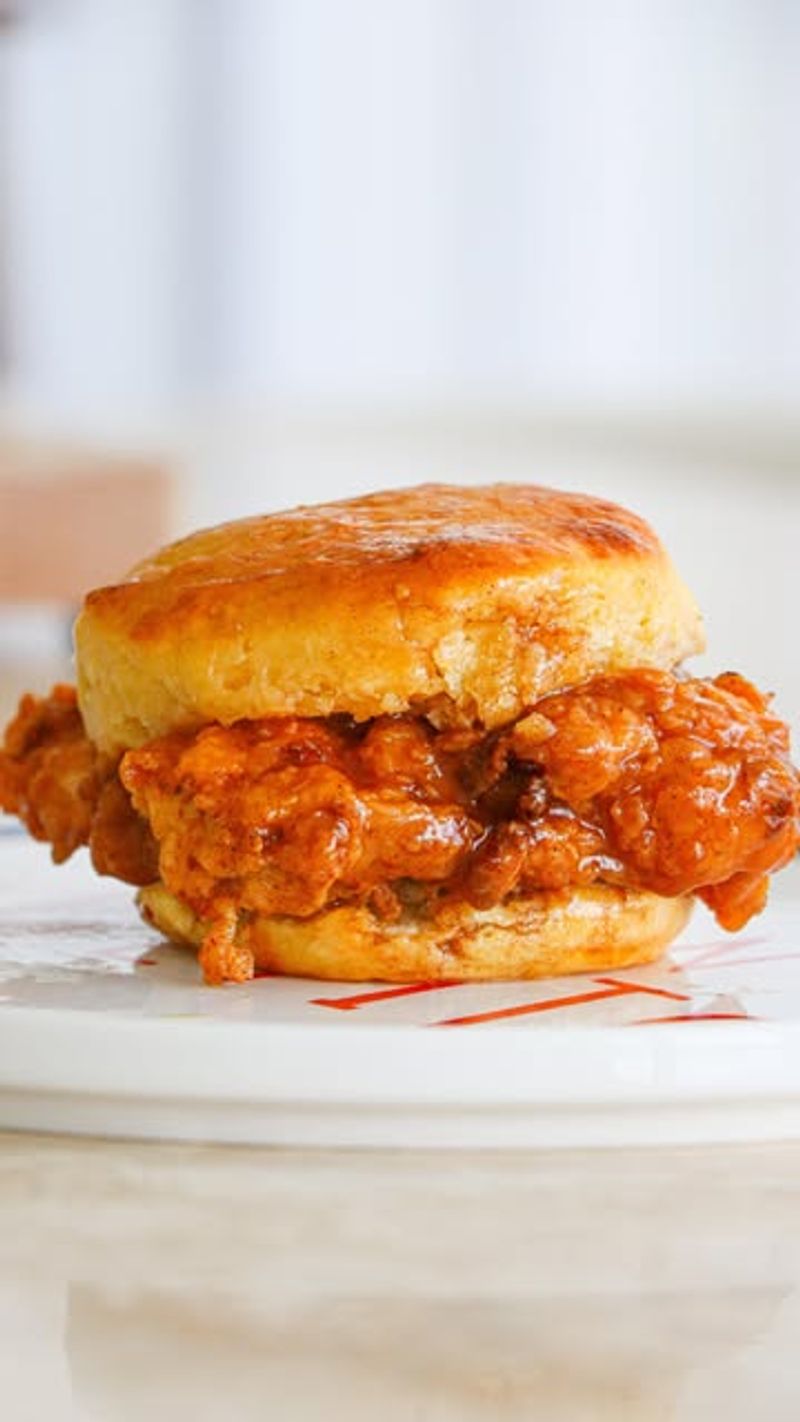
Golden fried chicken accompanied by buttermilk biscuits hinted at a slightly more affluent table, often reserved for special gatherings. Crispy skin and tender meat defined celebration and indulgence.
Though many believed it a wealthy dish, resourceful cooks found ways to prepare poultry for big occasions. It represented gracious hospitality, especially at Sunday socials.
14. Sweet Potato & Pecan Casserole
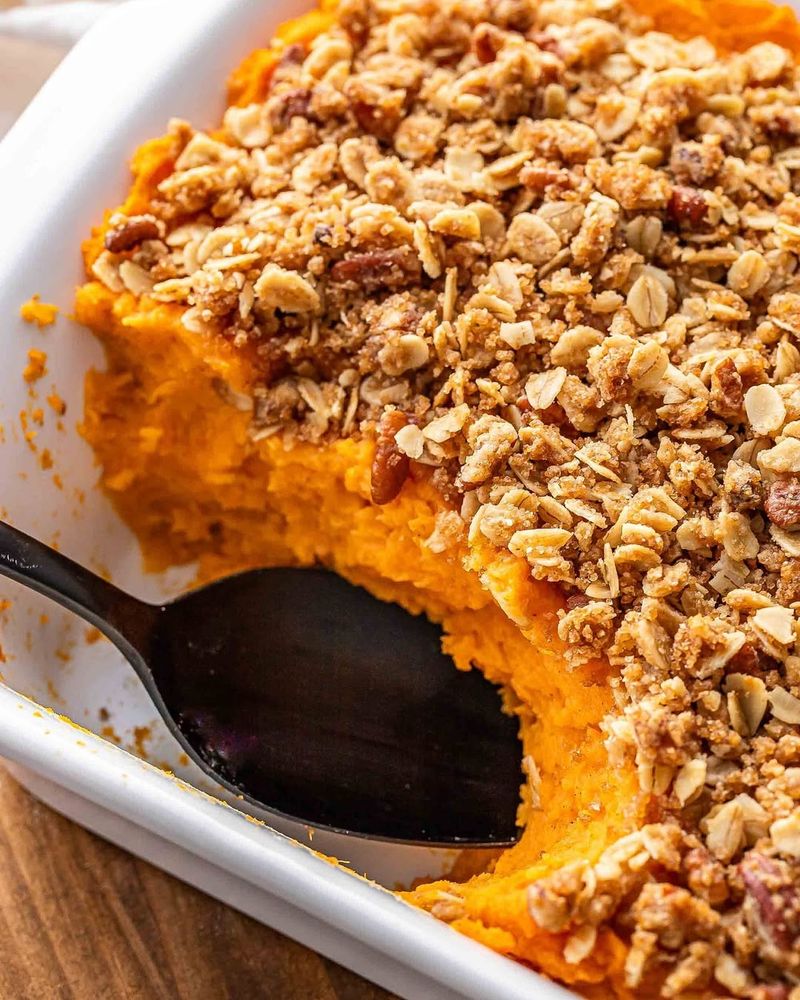
Sweet potatoes baked with pecans and maybe a bit of molasses blended into a sweet, hearty casserole. Locals showcased two abundant crops in a single bowl bursting with flavor.
It was a side dish that bridged savory and sweet, fitting in perfectly at harvest gatherings. Southern tradition elevated simple produce into something comforting and decadent.
15. Brunswick Stew
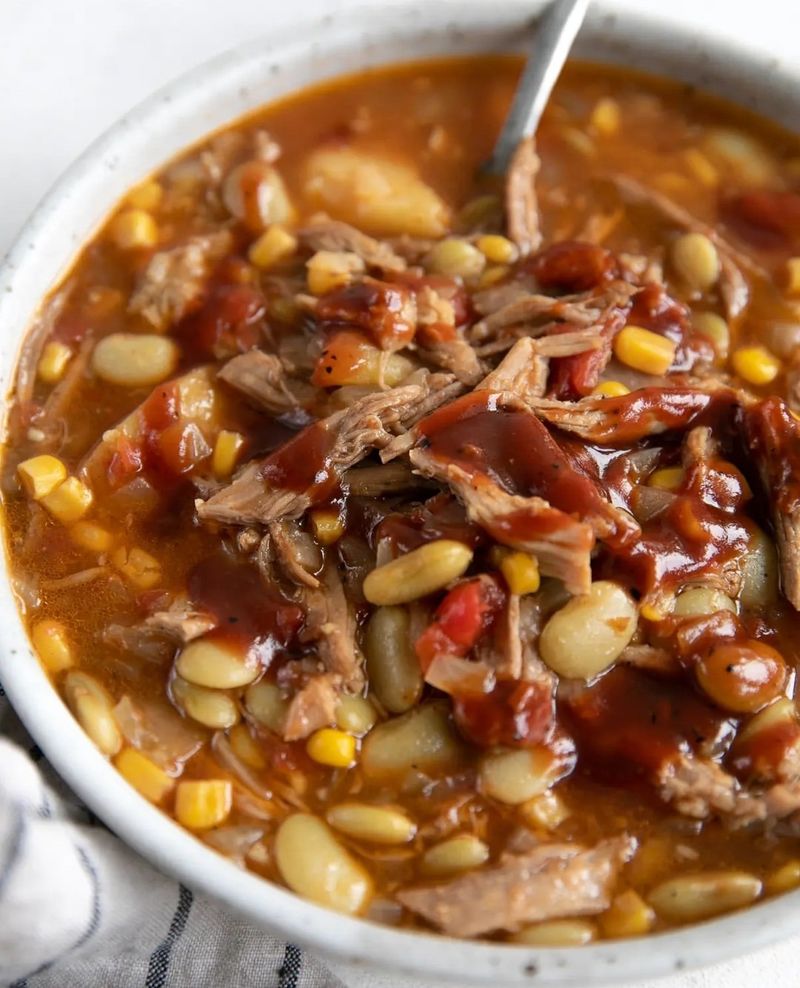
A slow-simmering Brunswick stew combined vegetables and leftover or wild-caught meat. Thick, tomato-based broth and a dash of seasoning made it a meal that seemed to last forever.
It’s said to have originated in two places—Brunswick County, Virginia, or Brunswick, Georgia—but either way, it became a widespread favorite. The stew’s adaptability mirrored the resourceful spirit of the era.
16. Oyster Stew

In busy port towns, oyster stew came together with fresh cream, a bit of butter, and plump oysters. The briny shellfish mingled with the rich base for a velvety texture.
This coastal specialty gave a taste of maritime bounty to city dwellers, proving the sea’s critical role in 19th-century American diets. It was a splash of luxury in an otherwise simple menu.
17. Mutton Chops & Boiled Potatoes
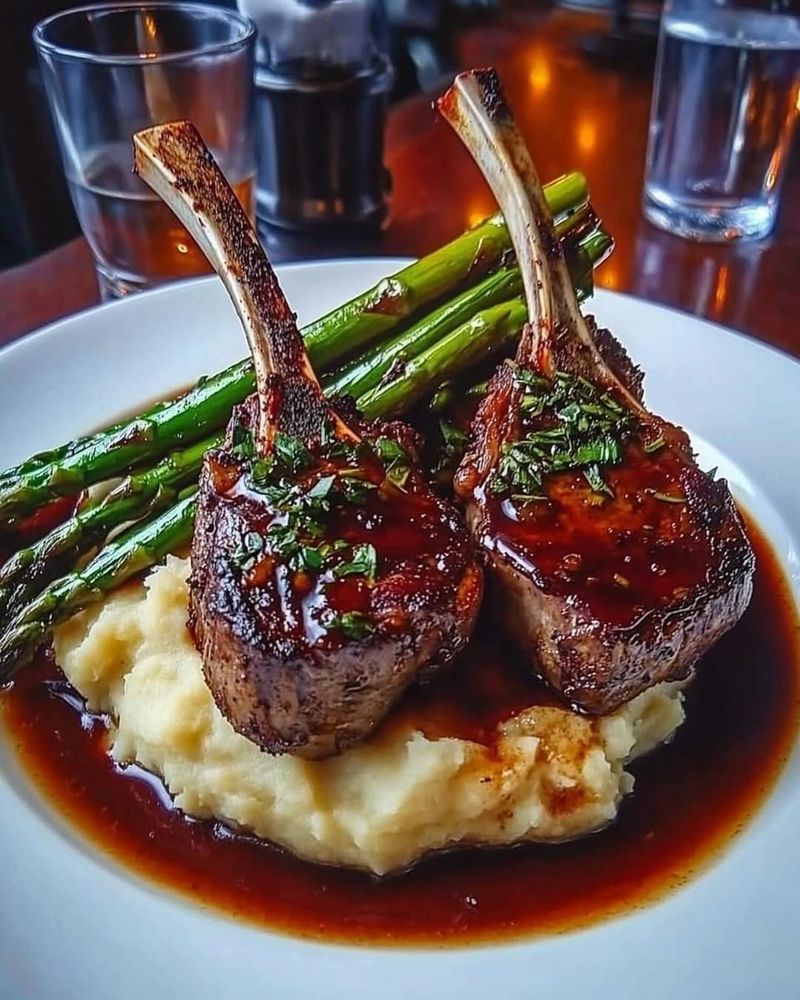
Mutton chops alongside boiled potatoes signaled middle-class ambition, offering a robust meal with savory, roasted notes. Though less popular today, mutton was once a reliable protein source.
Many found the flavor stronger than beef, but it was standard fare in cities and farmhouses alike. Boiled potatoes completed a no-nonsense plate that suited the hardworking families of the time.
18. Baked Beans & Brown Bread
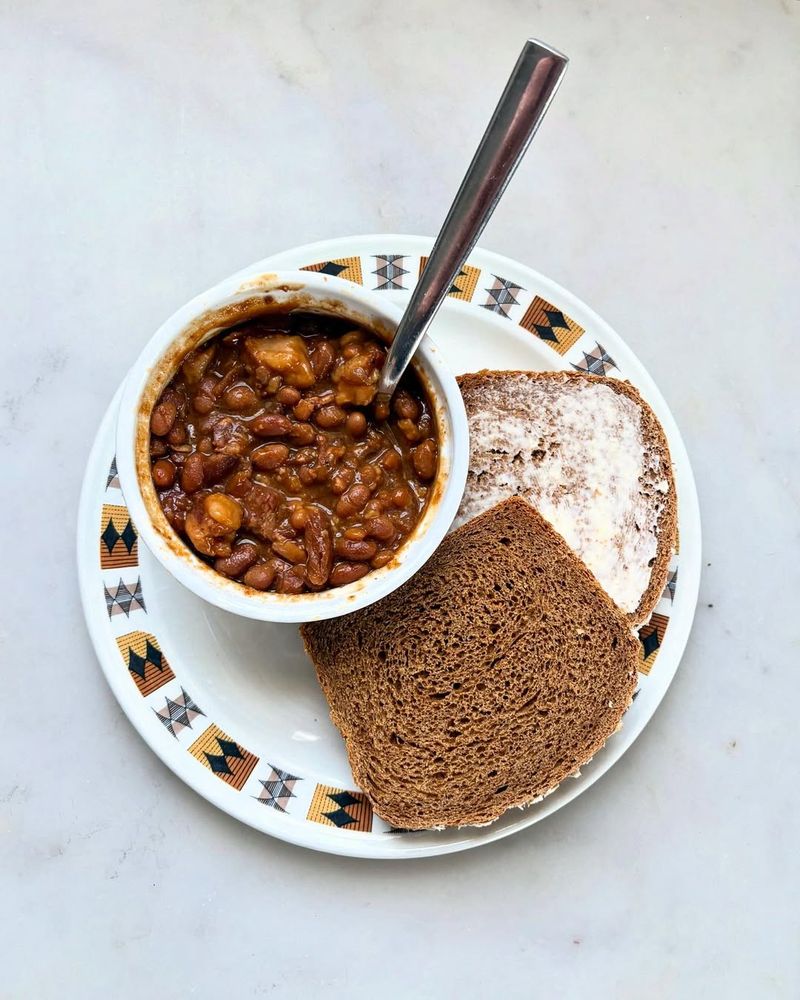
A pot of baked beans paired with dense brown bread exemplified New England’s slow-cooked tradition. Molasses, salt pork, and hours in the oven yielded beans both sweet and smoky.
Meanwhile, the hearty brown bread, steamed or baked, balanced the dish’s richness. Every bite paid homage to Yankee frugality and communal feasts.
19. Meat Pie With Suet Crust
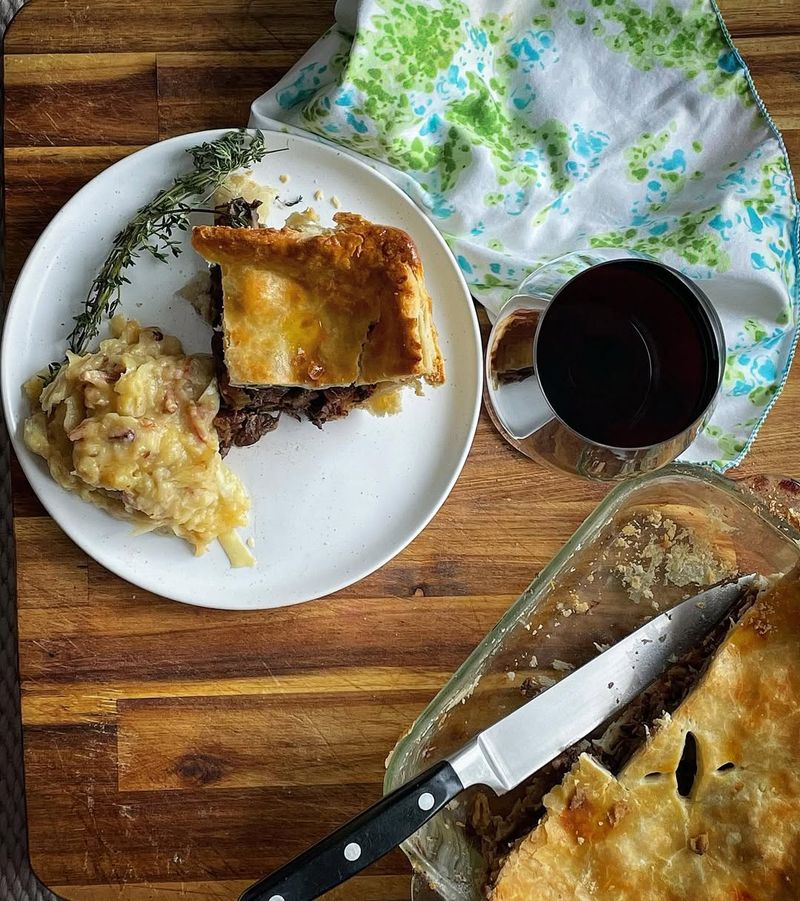
Meat pies with suet crust gave comfort and practicality to kitchens where nothing went to waste. Chopped or ground meat, veggies, and rich gravy met a thick, lard-based pastry that sealed in warmth.
Though heavier than modern pastries, the suet crust embodied old-world savory pie traditions. It nourished laborers and families looking for a robust, all-in-one meal.
20. Hash & Fried Potatoes
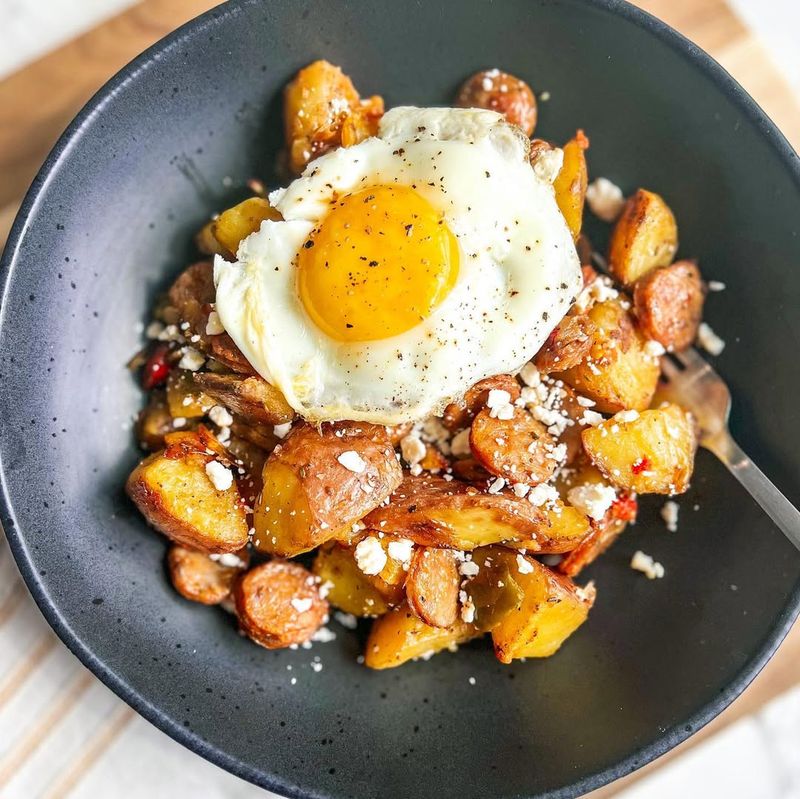
Hash and fried potatoes emerged as a leftover miracle, repurposing bits of meat and onions. The skillet lent a crispy finish that begged for a dash of salt and pepper.
Households embraced it as a thrifty lifesaver, making random scraps shine in a hearty supper. Quick, simple, and deeply satisfying, it became a comfort dish across the nation.
21. Apple Pandowdy
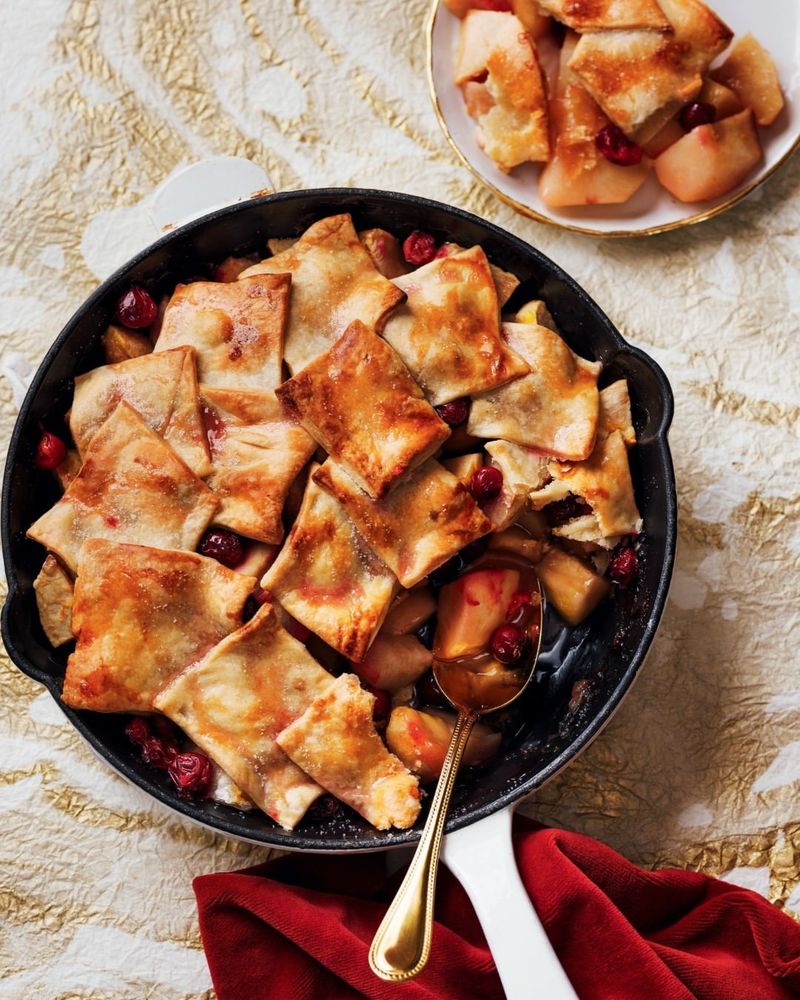
Apple pandowdy blended spiced apples with a broken crust for a rustic dessert. As it baked, the crust sank into the fruit, mingling sweet syrup and flaky pastry in every spoonful.
This old-fashioned treat used orchard-fresh apples and a humble dough. It was a sweet conclusion to any 1800s feast, reminiscent of changing seasons and family gatherings.
22. Shoofly Pie
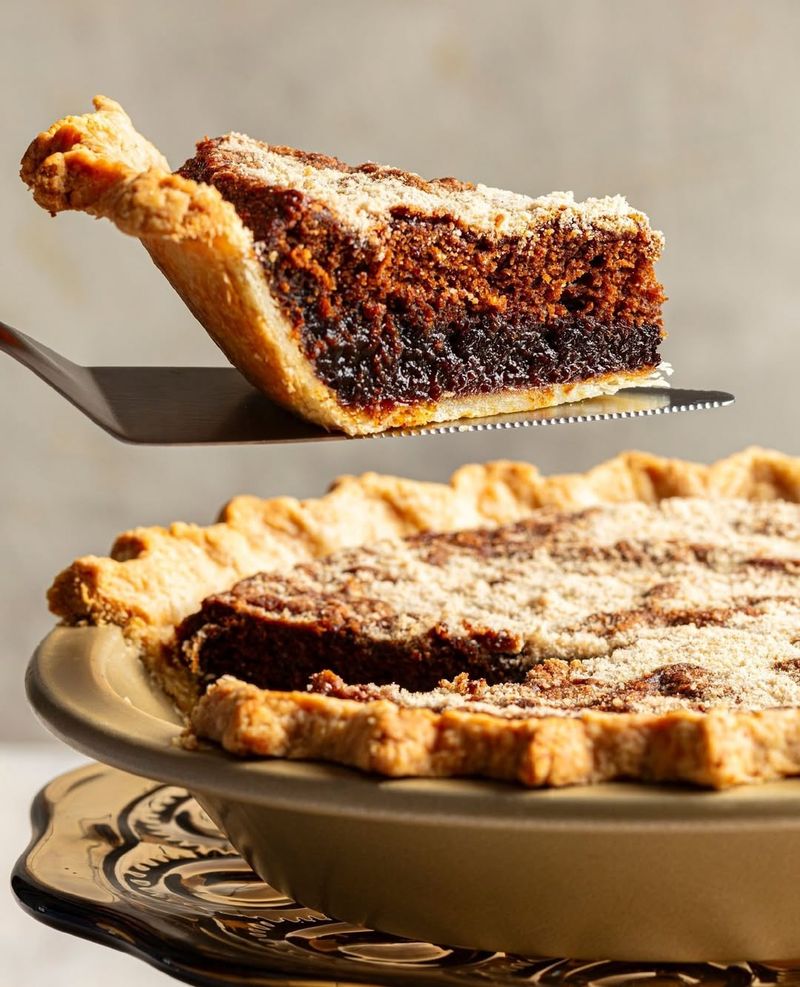
A thick, molasses-laden filling defined shoofly pie, cherished in Pennsylvania Dutch country. Its crumb topping provided a pleasant crunch over the sticky, caramel-like base.
People savored its sweet intensity with a cup of strong coffee. The name supposedly came from the need to shoo flies away, a nod to its unabashedly sweet allure.
23. Pumpkin Pudding

Pumpkin pudding preluded the modern pumpkin pie, blending cooked squash with spices and cream. Baked in a dish, it had a soft, velvety texture that warmed the spirit.
Rural families often relied on pumpkins as a staple winter crop. It was a taste of comfort and a hint of the evolving American palate.
24. Bread Pudding With Raisins
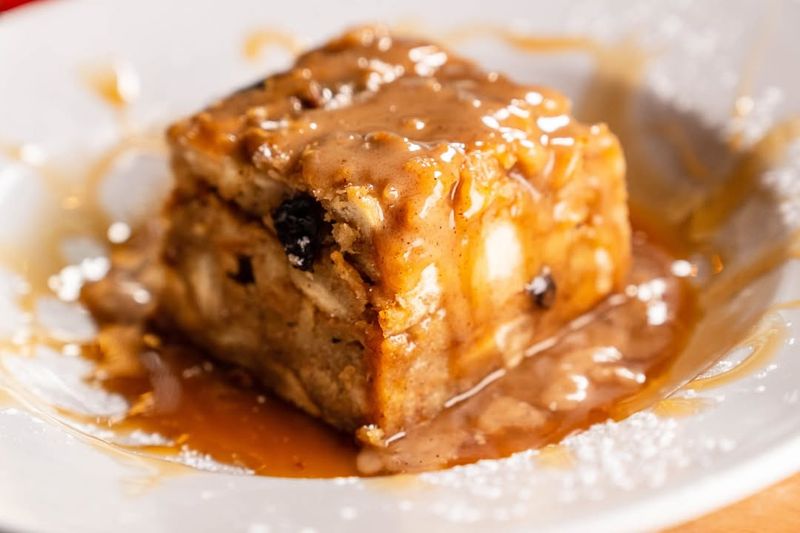
Bread pudding with raisins kept stale loaves from going to waste, mixing eggs, milk, and sugar into a moist, custardy dessert. Dotted with raisins, it provided bursts of sweetness amidst the soft crumb.
Economical and delicious, it bridged modest budgets and a longing for after-dinner treats. Its popularity soared as it comforted many households through tough times.
25. Maple Sugar Pie
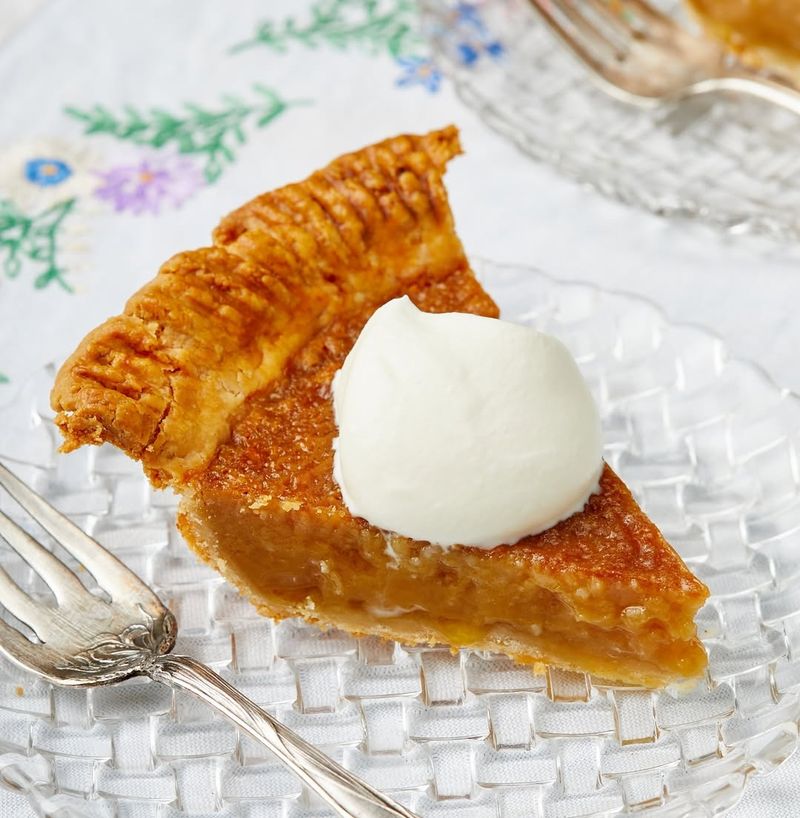
This pie harnessed the Northeast’s sugary maple sap in a rich, caramel-hued filling. Its sweet aroma and velvety consistency made it a luxurious dessert in an era of limited refinement.
Northern families tapped their own trees or traded for syrup, crafting a pie that spoke to regional pride. Each slice was a tribute to the sweet blessing of maple season.

